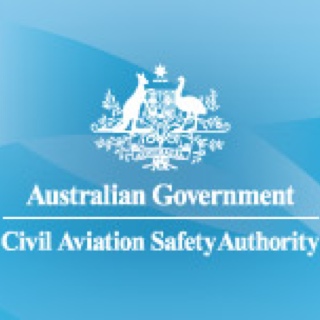Information
-
Regulatory Service/ Surveillance Number and Port:
-
Station:
-
Handling Company Name:
-
Address:
-
Type of Company:
-
Responsible Manager:
-
Conducted on
-
Inspectors
- Peter Marsh
- Tony Aytlett
- Rizwan Sheikh
- Derek Fox
- Owen Richards
- Michael Rossiter
- Alex Gonzalez
- David Smith
- Bruce Reilly
De-Icing and Ant-Icing Fluids
-
Deicing Fluids
-
Manufacturer and Brand name:
-
Previous Inspection Results
-
Were there any discrepancies noted at the previous winter inspection?
-
Details of Finding:
-
Has the finding been closed?
Procedures and Documentation
-
Does the Deicing/Anti-icing handling company have its own deicing/anti-icing procedures manual?
-
Specify Manual name and Revision status.
-
Are deicing/anti-icing procedure manuals available from any Part 121 (Air Transport) operators?
Procedure Manuals
-
Airline:
-
Manual Name:
-
Revision status:
-
Are the procedures used by the handling company based upon the approved company manual?
-
Findings:
Deicing/Anti-icing Fluids
-
Are fluid release documents (Certificate of Conformance or equivalent) received from the fluid manufacturer for each fluid delivery/batch and retained by the consignee for inspection as necessary?
-
Findings:
-
Are fluid delivery checks (incoming inspection) performed and records retained?
-
Findings:
-
Are pH checks on equipment carried out prior to first use of the day and after each refilling of fluids? Are the results recorded and is the information available to operators?
-
Findings:
-
Are concentration checks (refractive index checks) on equipment carried out prior to first use of the day and after each refilling of fluids? Are the results recorded and is the information available to operators?
-
Findings:
-
NOTE:
For details and exceptions, refer to the International Chapter 13.2.1.1 -
Are fluid laboratory checks carried out periodically on fluid samples (Type II, III, and IV fluids), the result recorded and is the information available to the operators?
-
Findings:
-
NOTE:
Fluid laboratory checks shall be performed at the start of the winter season. Fluid sample shall be taken from all deicing/anti-icing vehicle spraying nozzles of all vehicles and from all storage tanks. -
Does the handling company apply an acceptable procedure for fluid sampling and is this procedure documented?
-
Finding:
Training and Qualification
-
Do the personal carrying out the deicing/anti-icing operation receive training in cold weather operations?
-
Findings:
-
Do the personal carrying out the post deicing/anti-icing check receive training in cold weather operations?
-
Findings:
-
Are the training materials used by the handling company based on the approved company manual?
-
Findings:
-
Do all personal mention above receive annual refresher training?
-
Findings:
-
Are training records and authorisations maintained?
-
Findings:
-
Is the success of the training evaluated?
-
- Theoretical Test
- Practical Assessment
-
Findings:
-
NOTE:
Practical assessment is optional for the personal performing the post-deicing/anti-icing check. -
Is the pass mark established? (min 75%)
-
Findings:
-
Is there evidence to show knowledge deficiencies have been addressed?
-
Findings:
-
Place a Check mark for all fleets types that are trained.
- ATR-42
- A300
- A310
- A318
- A319
- A320
- A321
- A330
- A340
- A380
- B1900
- B727
- B737
- B747
- B757
- B767
- B777
- B787
- MD11
- DH8
- BAe146
- E135/145
- E170
- Dor328
- Falcon
- F100
- Golfstream
- Learjet
- Jet31/41
- DC8
- DC(
- DC10
- CRJ/CJ65
- Saab340
- Shorts 360
Post Deicing/Anti-icing Check and transmission of the Anti-icing code to the Captain
-
Are the responsibilities for the post deicing/anti-icing check in compliance with the company manual?
-
Findings:
-
Are written procedures established for the communication between the flight crew and the ground crew performing the deicing/anti-icing and post deicing/anti-icing checks?
-
Company Manual reference.
-
Was communication between the flight crew and the ground crew conducting the deicing/anti-icing operation in compliance with documented procedures?
-
Findings:
-
Where necessary, does the person performing the Post Deicing/Anti-icing Check, have (assess to ) equipment offering sufficient visibility of the aircraft critical parts to be checked?
-
Specify details:
-
Findings:
Deicing/Anti-icing Facilities
-
Where are the deicing/anti-icing operations carried out?
- Gate
- After pushback
- Remote/ Centralised position
- End of Taxi-way
- Other (specify)
-
Details:
-
If deicing/anti-icing operations are carried out in an area away from the gate, who certifies that the aircraft has been correctly deiced/anti-iced and that the appropriate surfaces are free from all forms of frost, ice, slush, and snow?
-
Do airline personal have access to the remote deicing/anti-icing position/s?
-
How is the fluid stored?
- Fixed Tanks
- Mobile Tanks/Trailor
- Cubitainer/Barrels
-
Is the fluid heated in the storage tanks?
-
What method of heating is employed and to what temperature is the fluid heated?
-
Are all storage tanks and filling ports labelled for fluid type/mix?
-
Are all components of the storage facility constructed and maintained in accordance with the company Manual?
-
Findings:
-
Are all the refractometers calibrated or functional checks performed periodically and documented?
-
Types of Checks performed?
-
Interval:
-
Findings:
-
Are deicing/anti-icing vehicles available which are reported not to be used by the handling company?
Deicing/Anti-icing Equipment
-
-
Manufacturer:
-
Model:
-
Total Number of this model:
-
Fluid Type:
-
Concentration:
-
Fluid temp (C)
-
Fluid temp at nozzle if available (C):
-
Applicable for anti-icing with Type I fluid only:<br> Is the temperature of the heated fluids and fluid mixtures at or above 60 degs C (140F) at the nozzle?
-
How is it ensured that the temperature of the heated fluids and fluid mixtures is at or above 60 degrees C (140F) at the nozzle?
-
Explain method:
-
Are vehicle tanks/filling ports labelled for fluid type and/or mixture rate?
-
How is the fluid mixed?
















